- Home
- Richard Dawkins
The Magic of Reality Page 3
The Magic of Reality Read online
Page 3
Unfortunately, there was a wicked snake in the garden, who approached Eve and persuaded her to give Adam the forbidden fruit from the tree of knowledge of good and evil. Adam and Eve ate the fruit and promptly acquired the knowledge that they were naked. This embarrassed them, and they made themselves aprons out of fig leaves. When the god noticed this he was furious with them for eating the fruit and acquiring knowledge – losing their innocence, I suppose. He threw them out of the garden, and condemned them and all their descendants to a life of hardship and pain. To this day, the story of Adam’s and Eve’s terrible disobedience is still taken seriously by many people under the name of ‘original sin’. Some people even believe we have all inherited this ‘original sin’ from Adam (although many of them admit that Adam never actually existed!), and share in his guilt.
The Norse peoples of Scandinavia, famous as Viking seafarers, had lots of gods, as the Greeks and Romans did. The name of their chief god was Odin, sometimes called Wotan or Woden, from which we get our ‘Wednesday’. (‘Thursday’ comes from another Norse god, Thor, the god of thunder, which he made with his mighty hammer.)
One day Odin was walking along the seashore with his brothers, who were also gods, and they came upon two tree trunks.
One of these tree trunks they turned into the first man, whom they called ‘Ask’, and the other they turned into the first woman, naming her ‘Embla’. Having created the bodies of the first man and first woman, the brother gods then gave them the breath of life, followed by consciousness, faces and the gift of speech.
Why tree trunks, I wonder? Why not icicles or sand dunes? Isn’t it fascinating to wonder who made such stories up, and why? Presumably the original inventors of all these myths knew they were fiction at the moment when they made them up. Or do you think many different people came up with different parts of the stories, at different times and in different places, and other people later put them together, perhaps changing some of them, without realizing that the various bits were originally just made up?
Stories are fun, and we all love repeating them. But when we hear a colourful story, whether it is an ancient myth or a modern ‘urban legend’ whizzing around the internet, it is also worth stopping to ask whether it – or any part of it – is true.
So let’s ask ourselves that question – Who was the first person? – and take a look at the true, scientific answer.
Who was the first person really?
This may surprise you, but there never was a first person – because every person had to have parents, and those parents had to be people too! Same with rabbits. There never was a first rabbit, never was a first crocodile, never a first dragonfly. Every creature ever born belonged to the same species as its parents (with perhaps a very small number of exceptions, which I shall ignore here). So that must mean that every creature ever born belonged to the same species as its grandparents. And its great-grandparents. And its great-great-grandparents. And so on for ever.
For ever? Well, no, it’s not as simple as that. This is going to need a bit of explaining, and I’ll begin with a thought experiment. A thought experiment is an experiment in your imagination. What we are going to imagine is not literally possible because it takes us way, way back in time, long before we were born. But imagining it teaches us something important.
So, here is our thought experiment. All you have to do is imagine yourself following these instructions.
Find a picture of yourself. Now take a picture of your father and place it on top. Then find a picture of his father, your grandfather. Then place on top of that a picture of your grandfather’s father, your great-grandfather. You may not have ever met any of your great-grandfathers. I never met any of mine, but I know that one was a country schoolmaster, one a country doctor, one a forester in British India, and one a lawyer, greedy for cream, who died rock-climbing in old age. Still, even if you don’t know what your father’s father’s father looked like, you can imagine him as a sort of shadowy figure, perhaps a fading brown photograph in a leather frame. Now do the same thing with his father, your great-great-grandfather. And just carry on piling the pictures on top of each other, going back through more and more and more great-great-greats. You can go on doing this even before photography was invented: this is a thought experiment, after all.
How many greats do we need for our thought experiment? Oh, a mere 185 million or so will do nicely!
Mere?
MERE?
It isn’t easy to imagine a pile of 185 million pictures. How high would it be? Well, if each picture was printed as a normal picture postcard, 185 million pictures would form a tower about 220,000 feet high: that’s more than 180 New York skyscrapers standing on top of each other. Too tall to climb, even if it didn’t fall over (which it would). So let’s tip it safely on its side, and pack the pictures along the length of a single bookshelf.
How long is the bookshelf?
About forty miles.
The near end of the bookshelf has the picture of you. The far end has a picture of your 185-million-greats-grandfather. What did he look like? An old man with wispy hair and white sidewhiskers? A caveman in a leopard skin? Forget any such thought. We don’t know exactly what he looked like, but fossils give us a pretty good idea. Believe it or not, your 185-million-greats-grandfather was – a fish. So was your 185-million-greats-grandmother, which is just as well or they couldn’t have mated with each other and you wouldn’t be here.
Let’s now walk along our forty-mile bookshelf, pulling pictures off it one by one to have a look at them. Every picture shows a creature belonging to the same species as the picture on either side of it. Every one looks just like its neighbours in the line – or at least as much alike as any man looks like his father and his son. Yet if you walk steadily from one end of the bookshelf to the other, you’ll see a human at one end and a fish at the other. And lots of other interesting great- … great-grandparents in between, which, as we shall soon see, include some animals that look like apes, others that look like monkeys, others that look like shrews, and so on. Each one is like its neighbours in the line, yet if you pick any two pictures far apart in the line they are very different – and if you follow the line from humans back far enough you come to a fish. How can this be?
Actually, it isn’t all that difficult to understand. We are quite used to gradual changes that, step by tiny step, one after the other, make up a big change. You were once a baby. Now you are not. When you are a lot older you’ll look quite different again. Yet every day of your life, when you wake up, you are the same person as when you went to bed the previous night. A baby changes into a toddler, then into a child, then into an adolescent; then a young adult, then a middle-aged adult, then an old person. And the change happens so gradually that there never is a day when you can say, ‘This person has suddenly stopped being a baby and become a toddler.’ And later on there never comes a day when you can say, ‘This person has stopped being a child and become an adolescent.’ There’s never a day when you can say, ‘Yesterday this man was middle-aged: today he is old.’
That helps us to understand our thought experiment, which takes us back through 185 million generations of parents and grandparents and great-grandparents until we come face to face with a fish. And, turning round to go forwards in time, it’s what happened when your fish ancestor had a fishy child, who had a fishy child, who had a child … who, 185 million (gradually less fishy) generations later, turned out to be you.
So it was all very gradual – so gradual that you wouldn’t notice any change as you walked back a thousand years; or even ten thousand years, which would bring you to somewhere around your 400-greats-grandfather. Or rather, you would notice lots of little changes all the way along, because nobody looks exactly like their father. But you wouldn’t notice any general trend. Ten thousand years back from modern humans is not long enough to show a trend. The portrait of your ancestor of ten thousand years ago would be no different from modern people, if we set aside superficial differ
ences in dress and hair and whisker style. He would be no more different from us than modern people are different from other modern people.
How about a hundred thousand years, where we might find your 4,000-greats-grandfather? Well, now, maybe there would be a just noticeable change. Perhaps a slight thickening of the skull, especially under the eyebrows. But it would still only be slight. Now let’s push a bit further back in time. If you walked the first million years along the shelf, the picture of your 50,000-greats-grandfather would be different enough to count as a different species, the one we call Homo erectus. We today, as you know, are Homo sapiens. Homo erectus and Homo sapiens probably wouldn’t have wanted to mate with each other; or, even if they did, the baby would probably not have been able to have babies of its own – in the same way that a mule, which has a donkey father and a horse mother, is almost always unable to have offspring. (We’ll see why in the next chapter.)
Once again, though, everything is gradual. You are Homo sapiens and your 50,000-greats-grandfather was Homo erectus. But there never was a Homo erectus who suddenly gave birth to a Homo sapiens baby.
So, the question of who was the first person, and when they lived, doesn’t have a precise answer. It’s kind of fuzzy, like the answer to the question: When did you stop being a baby and become a toddler? At some point, probably less than a million years ago but more than a hundred thousand years ago, our ancestors were sufficiently different from us that a modern person wouldn’t have been able to breed with them if they had met.
Whether we should call Homo erectus a person, a human, is a different question. That’s a question about how you choose to use words – what’s called a semantic question. Some people might want to call a zebra a stripy horse, but others might like to keep the word ‘horse’ for the species that we ride. That’s another semantic question. You might prefer to keep the words ‘person’, ‘man’ and ‘woman’ for Homo sapiens. That’s up to you. Nobody, however, would want to call your fishy 185-million-greats-grandfather a man. That would just be silly, even though there is a continuous chain linking him to you, every link in the chain being a member of exactly the same species as its neighbours in the chain.
Turned to stone
Now, how do we know what our distant ancestors looked like, and how do we know when they lived? Mostly from fossils.
Fossils are made of stone. They are stones that have picked up the shapes of dead animals or plants. The great majority of animals die with no hope of turning into a fossil. The trick, if you want to be a fossil, is to get yourself buried in the right kind of mud or silt, the kind that might eventually harden to form ‘sedimentary rock’.
What does that mean? Rocks are of three kinds: igneous, sedimentary and metamorphic. I shall ignore metamorphic rocks, as they were originally one of the other two kinds, igneous or sedimentary, and have been changed by pressure and/or heat. Igneous rocks (from the Latin for ‘fire’, ignis) were once molten, like the hot lava that comes out of erupting volcanoes now, and solidified into hard rock when they cooled. Hard rocks, of any kind, get worn down (‘eroded’) by wind or water to make smaller rocks, pebbles, sand and dust. Sand or dust gets suspended in water and can then settle in layers of sediment or mud at the bottom of a sea, lake or river. Over a very long time, sediments can harden to make layers (or ‘strata’) of sedimentary rock. Although all strata start off flat and horizontal, they have often got tilted, upended or warped by the time we see them, millions of years later (we will see how this happens in Chapter 10 on earthquakes).
Now, suppose a dead animal happens to get washed into the mud, in an estuary perhaps. If the mud later hardens to become sedimentary rock, the animal’s body may rot away, leaving in the hardening rock a hollow imprint of its form which we eventually find. That is one kind of fossil – a kind of ‘negative’ picture of the animal. Or the hollow imprint may act as a mould into which new sediments fall, later hardening to form a ‘positive’ replica of the outside of the animal’s body. That’s a second kind of fossil. And there’s a third kind of fossil in which the atoms and molecules of the animal’s body are, one by one, replaced by atoms and molecules of minerals from the water, which later crystallize to form rock. This is the best kind of fossil because, with luck, tiny details of the animal’s insides are permanently reproduced, right through the middle of the fossil.
Fossils can even be dated. We can tell how old they are, mostly by measuring radioactive isotopes in the rocks. We’ll learn what isotopes are, and atoms, in Chapter 4. Briefly, a radioactive isotope is a kind of atom which decays into a different kind of atom: for example, one called uranium-238 turns into one called lead-206. Because we know how long this takes to happen, we can think of the isotope as a radioactive clock. Radioactive clocks are rather like the water clocks and candle clocks that people used in the days before pendulum clocks were invented. A tank of water with a hole in the bottom will drain at a measurable rate. If the tank was filled at dawn, you can tell how much of the day has passed by measuring the present level of water. Same with a candle clock. The candle burns at a fixed rate, so you can tell how long it has been burning by measuring how much candle is left. In the case of a uranium-238 clock, we know that it takes 4.5 billion years for half the uranium-238 to decay to lead-206. This is called the ‘half-life’ of uranium-238. So, by measuring how much lead-206 there is in a rock, compared with the amount of uranium-238, you can calculate how long it is since there was no lead-206 and only uranium-238: how long, in other words, since the clock was ‘zeroed’.
And when is the clock zeroed? Well, it only happens with igneous rocks, whose clocks are all zeroed at the moment when the molten rock hardens to become solid. It doesn’t work with sedimentary rock, which has no such ‘zero moment’, and this is a pity because fossils are found only in sedimentary rocks. So we have to find igneous rocks close by sedimentary layers and use them as our clocks. For example, if a fossil is in a sediment with 120-million-year-old igneous rock above it and 130-million-year-old igneous rock below it, you know the fossil dates from somewhere between 120 million and 130 million years ago. That’s how all the dates I mention in this chapter are arrived at. They are all approximate dates, not to be taken as too precise.
Uranium-238 is not the only radioactive isotope we can use as a clock. There are plenty of others, with a wonderfully wide spread of half-lives. For example, carbon-14 has a half-life of only 5,730 years, which makes it useful for archaeologists looking at human history. It is a beautiful fact that many of the different radioactive clocks have overlapping timescales, so we can use them to check up on each other. And they always agree.
The carbon-14 clock works in a different way from the others. It doesn’t involve igneous rocks but uses the remains of living bodies themselves, for example old wood. It is one of the fastest of our radioactive clocks, but 5,730 years is still much longer than a human lifetime, so you might ask how we know it is the half-life of carbon-14, let alone how we know that 4.5 billion years is the half-life of uranium-238! The answer is easy. We don’t have to wait for half of the atoms to decay. We can measure the rate of decay of only a tiny fraction of the atoms, and work out the half-life (quarter-life, hundredth-life, etc.) from that.
A ride back in time
Let’s do another thought experiment. Take a few companions and get in a time machine. Fire up the engine and zoom back ten thousand years. Open the door and have a look at the people you meet. If you happen to land in what is now Iraq, they’ll be in the process of inventing agriculture. In most other places they’ll be ‘hunter-gatherers’, moving from place to place, hunting wild animals and gathering wild berries, nuts and roots. You won’t be able to understand what they say and they will be wearing very different clothes (if any). Nevertheless, if you dress them in modern clothes and give them modern haircuts, they will be indistinguishable from modern people (or no more different from some modern people than people are different from one another today). And they will be fully capable of breeding
with any of the modern people on board your time machine.
Now, take one volunteer from among them (perhaps your 400-greats-grandfather, because this is approximately the time when he might have lived) and set off again in your time machine, back another ten thousand years: to twenty thousand years ago, where you have a chance to meet your 800-greats-grandparents. This time the people you see will all be hunter-gatherers but, once again, their bodies will be those of fully modern humans and, once again, they will be perfectly capable of interbreeding with modern people and producing fertile offspring. Take one of them with you in the time machine, and set off another ten thousand years into the past. Keep on doing this, hopping back in steps of ten thousand years, at each stop picking up a new passenger and taking him or her back to the past.
The point is that eventually, after a lot of ten-thousand-year hops, perhaps when you’ve gone a million years into the past, you’ll begin to notice that the people you meet when you emerge from the time machine are definitely different from us, and can’t interbreed with the people who boarded with you at the start of its journey. But they will be capable of breeding with the latest additions to the passenger list, who are almost as ancient as they are themselves.
I’m just making the same point as I made before – about gradual change being imperceptible, like the moving hour hand of a watch – but using a different thought experiment. It’s worth saying in two different ways, because it is so important and yet – quite understandably – so hard for some people to appreciate.
Let’s resume our journey into the past, and look at some of the stations on the way back to that fish. Suppose we have just arrived in our time machine at the station labelled ‘Six Million Years Ago’. What shall we find there? So long as we make a point of being in Africa, we’ll find our 250,000-greats-grandparents (give or take some generations). They’ll be apes, and they might look a bit like chimpanzees. But they won’t be chimpanzees. Instead, they’ll be the ancestors that we share with chimpanzees. They’ll be too different from us to mate with us, and too different from chimpanzees to mate with chimpanzees. But they will be able to mate with the passengers we took on board at Station Five Million Nine Hundred and Ninety Thousand Years Ago. And probably those from Station Five Million Nine Hundred Thousand Years Ago, too. But probably not those who joined us at Station Four Million Years Ago.

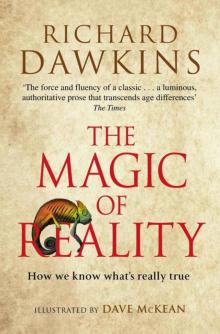 The Magic of Reality
The Magic of Reality The Extended Phenotype
The Extended Phenotype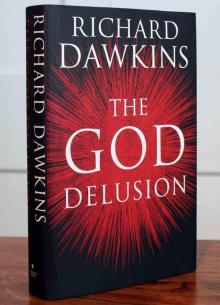 The God Delusion
The God Delusion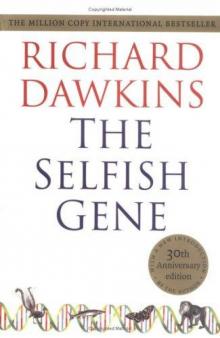 The Selfish Gene
The Selfish Gene The Blind Watchmaker
The Blind Watchmaker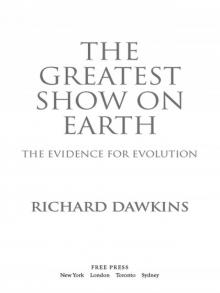 The Greatest Show on Earth
The Greatest Show on Earth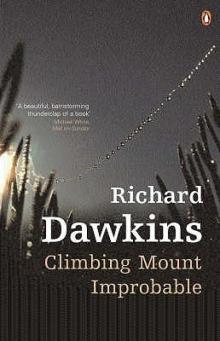 Climbing Mount Improbable
Climbing Mount Improbable Outgrowing God
Outgrowing God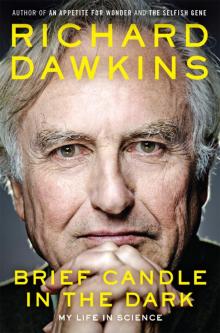 Brief Candle in the Dark
Brief Candle in the Dark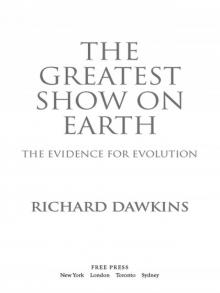 The Greatest Show on Earth: The Evidence for Evolution
The Greatest Show on Earth: The Evidence for Evolution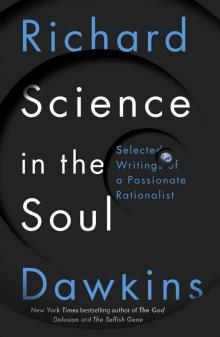 Science in the Soul
Science in the Soul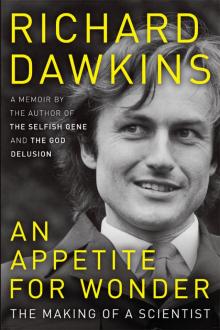 An Appetite for Wonder
An Appetite for Wonder